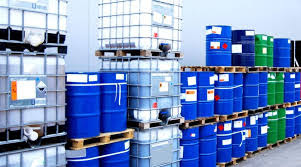Manufacturers are focused on Developing Cost-effective Means of Increasing Productivity of Commodity Chemicals
Both specialty and commodity chemicals can be approached with biotechnology but must make use of the special characteristics of living organisms for successful implementation. For specialty chemicals, key targets must add economic value to the raw starting compound (e.g., cellulose or glucose) and are capable of adding biological value to the end product (e.g., insulin). On the other hand, the use of inorganic chemicals requires the use of templates to drive the development of desired products through a process that is analogous to genetic engineering.
Several
advantages exist with respect to commodity chemicals over inorganic chemical
compounds that make them an attractive proposition for the designer and
developer. First, large scale investors have been unable to duplicate the the success that private investors have had in creating large scale venture capital
firms. Biotech companies focusing on developing new materials for a wide range
of applications have been able to attract significant venture capital because
they have the ability to demonstrate a return on investment via sales of both
specialty and core commodities and through the utilization of plant-based
resources. Additionally, many of these biotechnological ventures focus on
creating materials that can replace, perform similar functions, and/or add value
to those existing materials.
Inorganic
commodity chemicals have limited application in the production of
pharmaceuticals and similar drugs. Although there are some exceptions, this is
not a general trait. Many large scale industrial manufacturers have been
successful because they have been able to identify specific commodity chemicals
that can replace or perform similar functions to those that are missing from
their existing inventory. In addition, there are a number of companies in the
chemical industry that have been able to leverage their knowledge of biological
processes and use this knowledge to develop cost-effective means of increasing
the productivity of existing facilities and to reduce the cost of support
infrastructure and personnel required for handling specialty chemicals.
Organic
commodity chemicals represent a very diverse market. They include such common
household products as pesticides, antifreeze, paints, lubricants, fabrics,
bleaches, solvents, laundry detergents, fabric softeners, and more. There are
also many specialized petrochemicals that fall into this organic category.
Petrochemicals refer to the separation of natural gas and crude oil. A
petrochemical's development process begins with the separation of these two
liquids using a number of mechanical and chemical processes. These materials
can be marketed under the names of gasoline, liquid petroleum gas (LPG),
diesel, gasoline propane, natural gas, renewable natural gas, and other
proprietary names.
The
petrochemical sector is also a major player in the chemical industry due to
advances made in the chemical manufacturing process. Due to advances in
technology for producing large scale quantities of chemical substances, the
costs of developing new chemical products has come down significantly. In
addition, there have been dramatic changes in the volume of materials that can
be handled in the production of commodity chemicals. The development of solid
state machines and other technological advancements allow for greater
productivity and higher rate of throughput in the chemical sector.
There
are also a variety of specialty chemicals. These chemicals are typically
developed for applications that cannot be covered by the range of general or
petrochemical products. They represent an advanced form of the product and are
unique enough to merit their own segment in the chemical industry. Specialty
chemicals are the fastest growing segment of the chemical industry, due to
advances in the chemistry of certain types of compounds. Examples of such
compounds are antimicrobial agents, antineoplastic agents, chlorine compounds,
diesel, furanocoumarins, insulin, digestion agents, neurotransmitters, and
thyroid hormones. The future of the specialty chemicals looks particularly
bright as newer technologies take hold in areas such as energy production,
energy distillation, and biotechnology.
As
with the petrochemical industry, there are a number of steps that need to be
taken to ensure that the specialty chemicals do not end up in human or animal
consumption. For example, there is some concern that there is a correlation
between the use of petroleum-based products and increased instances of cancer.
Many environmental groups are working hard to have these chemicals banned,
although this might prove to be extremely difficult to accomplish. Efforts to
control the use of petroleum-based products, including oil, natural gas, and
coal as well as petroleum byproducts, could prove to be very contentious and
could result in substantial job losses in the specialty chemicals area.
Many
people are attracted to the idea of using the same materials and processes that
have traditionally been used in the petrochemical industry in order to produce
commodity-grade chemicals. However, there are significant challenges involved
with the design of these products, both in terms of economics and in terms of
safety. Due to certain limitations inherent in the design of synthetic
compounds, the safety of many of these products is not known for sure until
relatively late in the game. For this reason, many chemical producers choose to
stick with the more traditional approaches in the chemical production process
and use man-made materials instead. By using synthetic materials instead,
chemical engineers can be confident that what they are designing is free of any
unforeseen reactions from the materials in which it is being made. This gives
these synthetic compounds a number of advantages over the man-made alternatives
that exist in the chemical industry, including the ability to address a wide
range of challenges and the ability to utilize a wide range of processes and
technologies.


Comments
Post a Comment